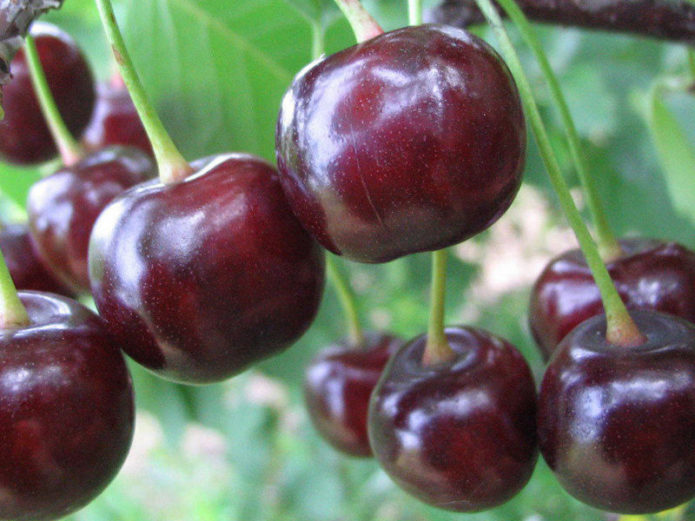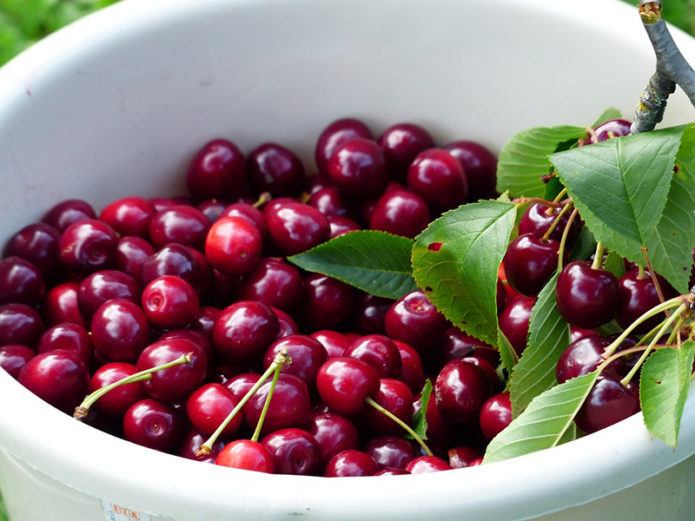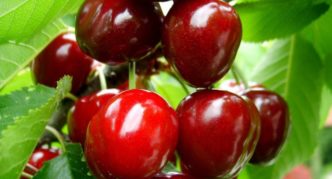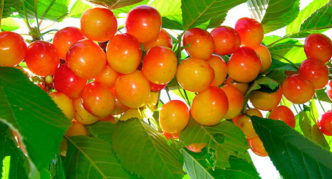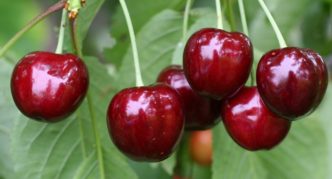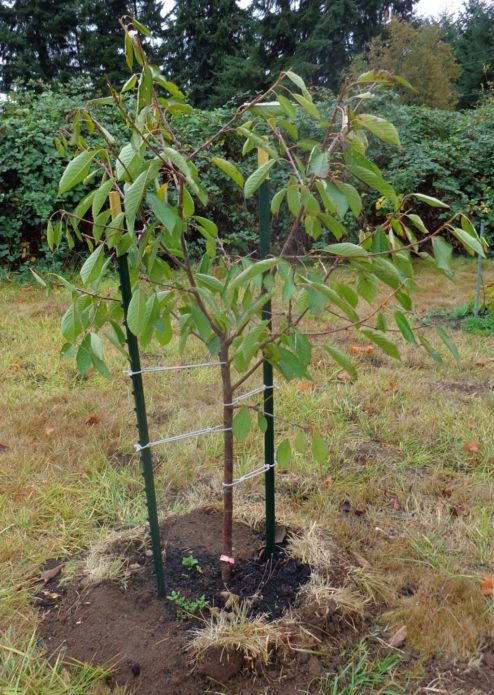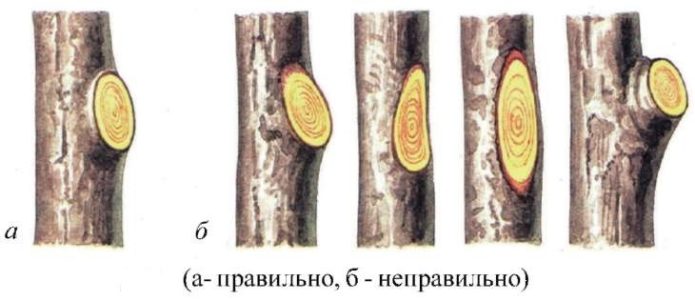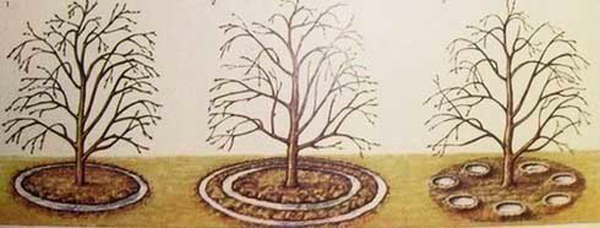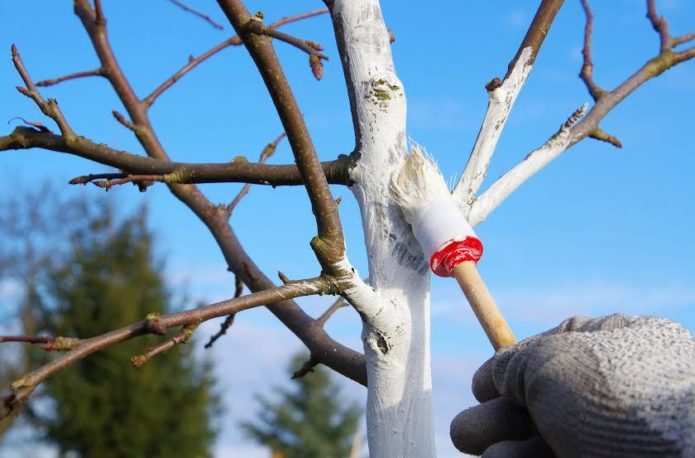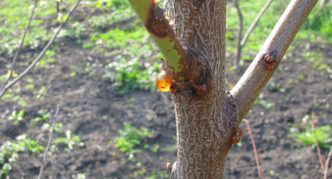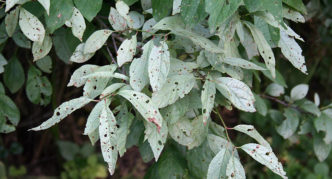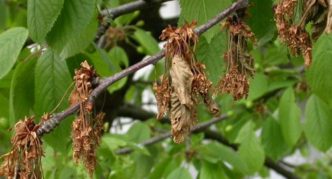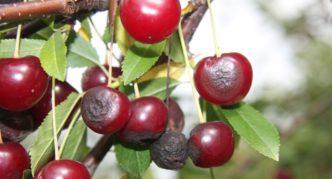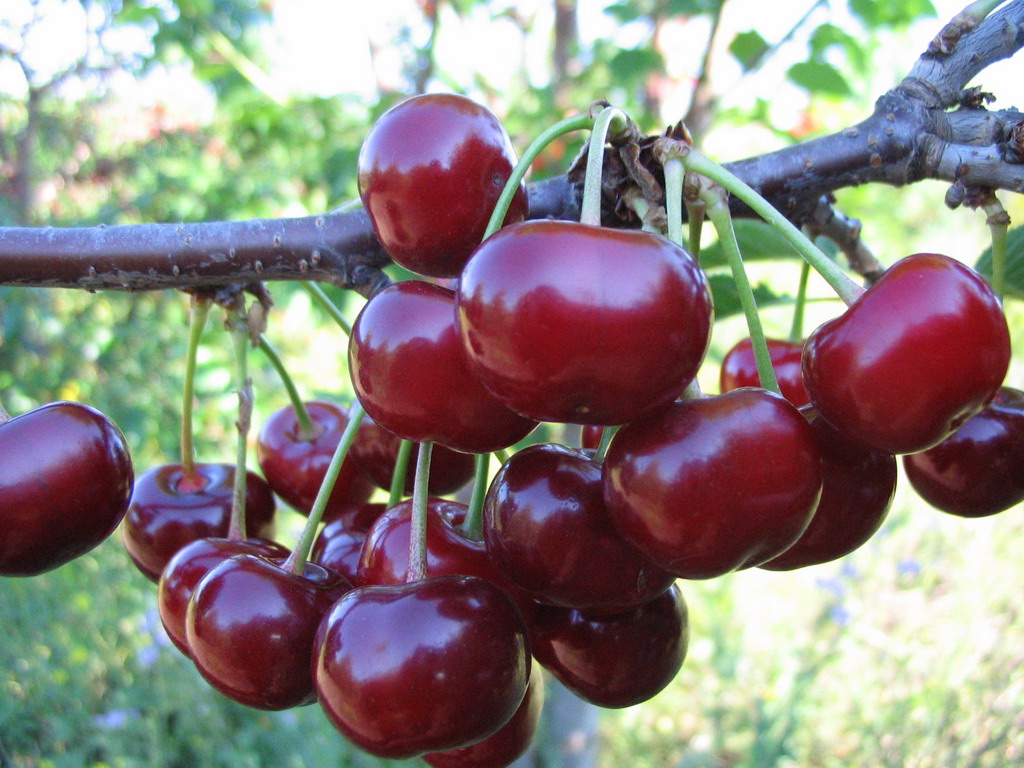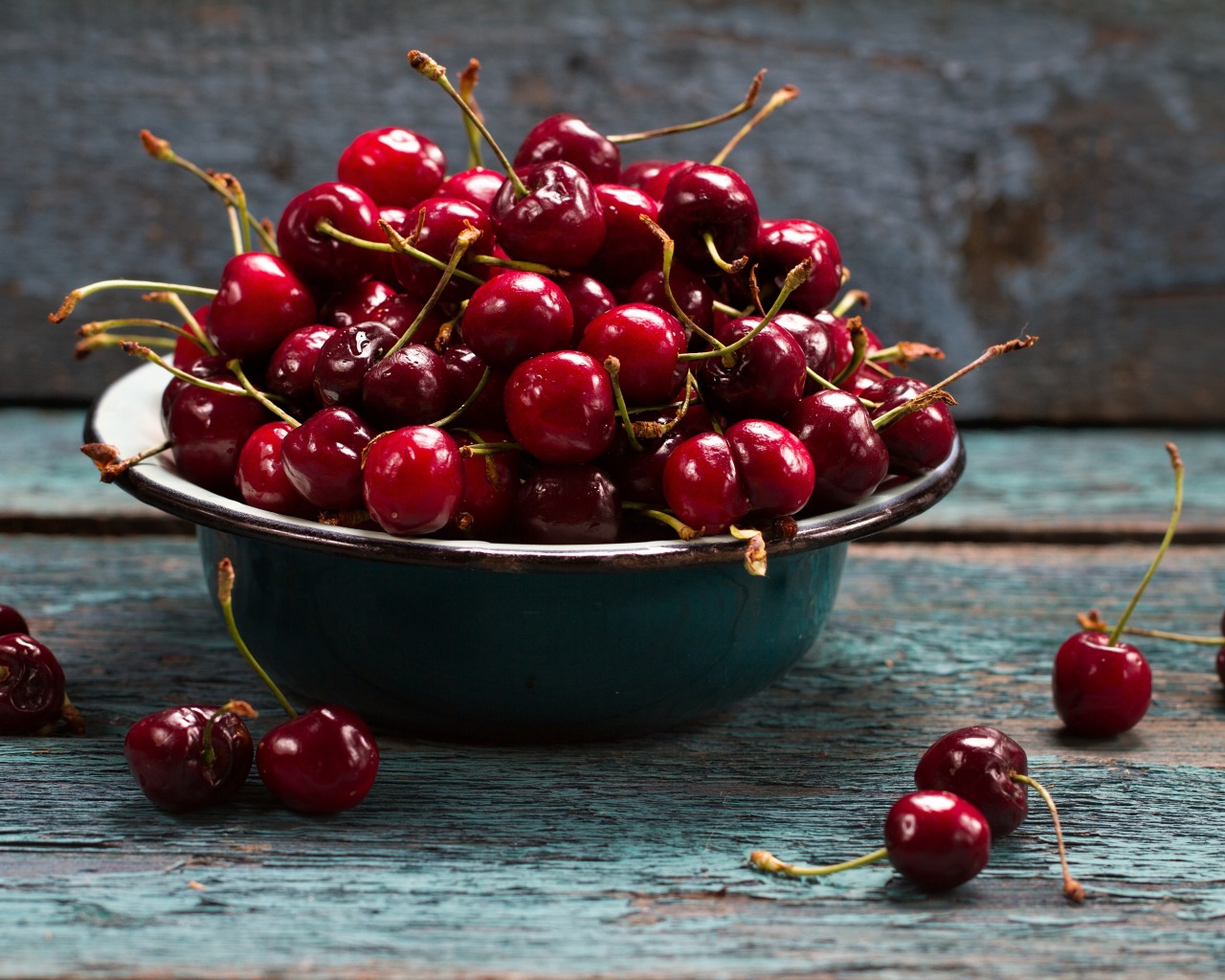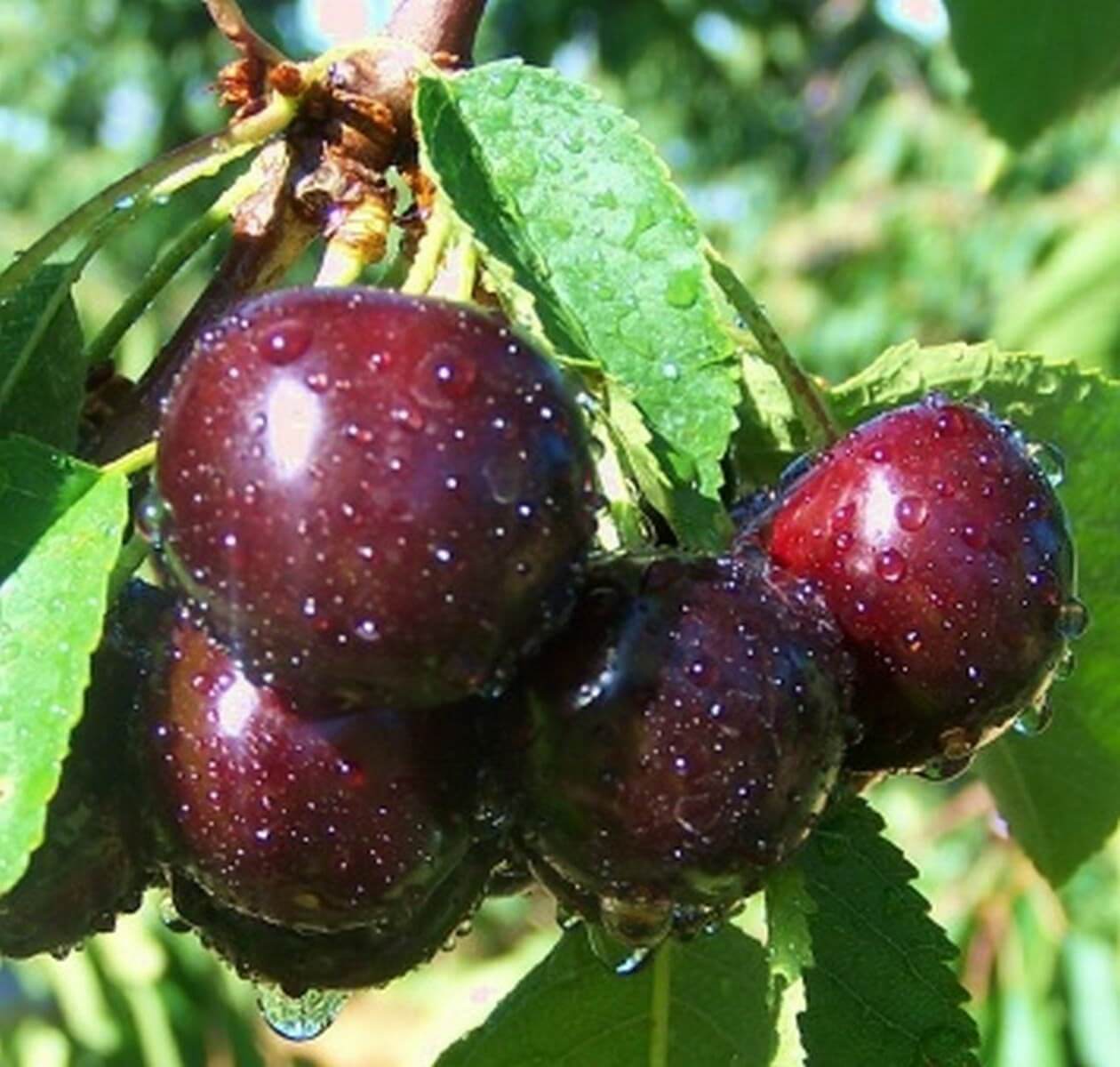Man and nature have always interacted with each other: everything that nature endowed man with, he constantly strived to multiply and improve. Gardening is one of the most fertile areas for development, because breeders are faced with the task of not only improving the long-known fruit trees, but it is much more exciting to create an absolutely new species, combining in it the characteristics of long-established varieties. One of the bred hybrids was the Miracle cherry.
Content
The history of the origin of the variety
Hybrids of cherries and cherries have been bred for a long time. The birthplace of the first dukes is England, where they appeared in the 17th century.
A hybrid of cherries and cherries is called duke, the term comes from the English May Duke, which means "May Duke". This beautiful name tells us that the hybrids reflect the noblest qualities of the various varieties and can be considered a kind of aristocratic among fruit trees.
Currently, one of the most popular and favorite among gardeners of dukes is the Miracle cherry. This variety was bred in Ukraine at the Donetsk Research Station, its creators are the famous agronomists L. Taranenko and A. Sychov. The “parents” of this duke are the Griot cherry and the Valery Chkalov cherry.
Appearance, features and pollinators Miracle cherry
The hybrid carries the qualities of both of its predecessors.
Appearance and distinctive features
Duke saplings are very similar in appearance to ordinary cherries. But, growing up, the tree shows the external features of both "parents". It has average growth rates and height. The shape of the crown is closer to the cherry, but the type of branching has been inherited from the cherry. From her, a large massive kidney. The leaf petioles are long, the leaves themselves are cherry-shaped in shape, and cherry-colored in density.
Duke Chudo cherry is considered to be quite resistant to low temperatures, occupying an average level between the varieties involved in breeding. But with severe frosts, freezing of flower buds can be observed, and this can lead to a decrease in yield due to the fact that fewer fruits are set.
Yield characteristics
An important feature of the Miracle Cherry is that flower buds are laid within a year after planting. Therefore, the duke begins to bear fruit early - the first harvest, albeit small, can be obtained already in the third, and sometimes even in the second year. The beginning of flowering of the variety falls at the moment when warm spring weather sets in, and may differ depending on the region where the cherry grows - in the south, usually until mid-May, in the middle lane - at the end of May or early June.The fruits, like those of a sweet cherry, are gathered in garlands and ripen on average one month after the end of flowering. Each berry is dark red, with a small pit, large (7-10 g). Moreover, one tree can yield up to 10 kg. The evaluation of the taste of Chudo cherries is extremely high - here the qualities of both varieties used in breeding were manifested in the best way. The fruit has a sweet, juicy pulp, but there is no characteristic sour cherry. The aroma recognizes both cherry and cherry notes.
Harvesting is recommended either in the morning or in the afternoon when the sun is less active. Pick the cherry, leaving the stalk. This will help the berries not to spoil for a long time, provide long storage and better conditions for transportation.
There is an easier and faster picking option - the “milking method”, when the berries are removed from the tree without the stalks. But this method, of course, has a downside - a short shelf life - and is used if you plan to quickly eat berries or make preparations. Therefore, keep in mind that there will be no more than a day for food or processing.
Pollinators for Miracle Cherry
Miracle cherry is self-fertile, therefore, to obtain a harvest, it is necessary to plant varieties next to it that will pollinate it. Due to the fact that the timing of flowering and fruiting of the duke is early, many varieties of cherries are suitable for pollination:
- Backyard;
- Annushka;
- Donetsk beauty;
- Iput;
- Sister;
- Donetsk coal;
- Yaroslavna;
- Kitaevskaya black.
Varieties that are not self-fertile are not suitable for pollination: Valery Chkalov, Drogana yellow, Valeria, Farewell, Large-fruited.
Photo gallery: pollinating cherries
- Cherry varieties Annushka, like Miracle cherry, was bred by the honored agronomist of Ukraine L.I. Taranenko
- Sweet cherry Household has an incredibly high yield
- Sweet cherry Yaroslavna - a variety of early ripening
The Miracle cherry itself cannot be a pollinator for other trees, since its pollen is sterile.
Planting and leaving
The miracle cherry is not a very demanding plant, but certain rules must be observed to guarantee favorable conditions for growth and development.
Sapling selection
The purchase of a seedling should be done in a specialized center or gardening facility in order to be sure of purchasing the desired hybrid. When choosing a seedling, you need to pay attention to the following points:
- the root system is visually developed, has no damage, defects, has a uniform color;
- the trunk is straight, the bark is evenly colored;
- there are no signs of diseases or traces of pests on the branches and leaves;
- the main shoot of a high-quality seedling has a height of at least 60 cm.
Seat selection and landing
The time of year for duke landing may differ depending on the region. In the south, it is permissible to plant it in the fall - before the onset of cold weather, the tree manages to get used to a new place. But there is always the risk of a snowless and abnormally cold winter, which can lead to the death of the plant. In the middle lane, the best period will be spring, since it will take more time for acclimatization.
When choosing a plot on which the future garden will grow, keep in mind that the Miracle cherry loves sunlight and the absence of winds. Therefore, avoid places where the duke can be shaded by taller trees, buildings or other objects. A lowland will also be an unsuitable option, as excess moisture will accumulate there. For the same reason, places with a close groundwater table should be avoided.
The pit in which the future tree will be planted in spring is being prepared in the fall. The depth and width of the pit should be approximately the same - 60–70 cm. Fertile soil is laid in it, which is enriched with organic fertilizing (about 15 kg per 1 sq. M).If the soil is acidic, then lime fertilizer is additionally applied. During the time that elapses from the moment of preparation to direct planting, the earth will have time to settle, and the seedling will not sink with the soil. The miracle cherry is a large tree, therefore a certain distance must be maintained between the seedlings - 5 m is considered optimal. This will enable each duke to receive the necessary amount of nutrients and water for proper growth and a good harvest.
During planting, be sure to spread the roots of the seedling. Covering them with earth, make sure that no voids are formed. The root collar must be left above the soil surface at a height of 5 cm. Be sure to drive in a peg nearby, to which the growing Miracle cherry will be tied in the future. At the end of the process, compact the earth and water the tree using 2–3 buckets of water.
If the originally purchased seedling was not formed correctly, then after planting it is necessary to prune it: shorten the central shoot to 60 cm, remove the third part from the branches.
Video: instructions for landing a duke
Pruning and shaping the crown
The formation of the crown must be given due attention, since otherwise the tree is strongly stretched, and in the future, under the weight of the fruit, the branches may break. To give the shoots the desired horizontal direction of growth, a special load is hung on them or tied to the trunk.
Duke pruning is carried out in the spring before the sap starts to move to eliminate the risk of tree drying out. Young shoots are shortened by one third, and branches, leading to thickening of the crown, are cut in a ring. With proper pruning, in this case, the wound inflicted on the branch will heal quickly. The ring is located at the base of the branch, and the cut is made strictly along its upper edge. An uneven cut must be cleaned with a knife for better healing, then the cut branches are covered with garden pitch.
Also remember to sanitize old, broken, dead or diseased branches.
Watering
The miracle cherry loves timely watering, but you should not be overly zealous in this matter: excessive watering can lead to the formation of cracks on the trunk and gum flow. Young trees should be watered once a week, and 15–20 liters of water should be used per seedling. For mature trees, the watering interval is 2 weeks. And although this hybrid can withstand even dry periods well, it is best not to allow this.
Use a mulching procedure to retain moisture in the soil for a long period after watering. For this, materials such as peat, sawdust, dry grass, humus, needles and others are useful. The mulch is spread on the trunk circle without directly affecting the trunk. In addition to protecting against evaporation, this procedure will additionally save nutrients, suppress the growth of weeds, and prevent soil erosion.
Watering should be stopped two weeks before the harvest ripens to avoid cracking the berries.
Top dressing
Frequent feeding of the Cherry Miracle should be avoided so as not to cause irreparable damage to the plant. For the first 4–5 years, the tree should not be fed at all, if the technology for enriching the soil with the necessary nutrients was followed during planting. Excessive feeding (especially with nitrogen fertilization) can provoke an increased growth of the duke, which will negatively affect the volume of the crop. In cases with a young seedling, over-fertilization can even lead to its death in winter.
If the soil on which the Miracle cherry grows is initially fertile, then the adult trees will have enough food from organic mulch. On poorer soils, organic fertilizers such as cow dung can be applied. It is bred in the following proportions: 10 liters of mullein, 50 liters of water, 1–1.5 kg of ash. The resulting solution is infused from several days to a week, filtered and applied in half a bucket to each tree after watering. With the arrival of autumn, superphosphates (200-350 g) and potash fertilizers (80-150 g) can be added.
Preparation for wintering
Miracle cherry is sensitive to low temperatures, therefore, in order to save the tree, you should take care of the timely good shelter of the duke for a dormant period. In this case, it is important to pay attention not only to the root system, but also to the trunk.
- The trunk must be whitened - a layer of whitewash will protect against possible sunburn, sudden temperature changes, damage caused by rodents or pests.
- After that, it is covered with materials that can pass air (burlap, spruce branches, nonwovens, newspapers, thick paper) so that the tree can breathe and exclude the possibility of barking. For additional protection from hares and mice, you can put plastic bottles on the barrel.
- The trunk circle is mulched, creating additional protection of the roots from hypothermia. It will be useful to cover the Miracle cherry with an additional layer of snow.
Duke flower-bearing buds are sensitive to frost and can freeze slightly. To create the heat necessary for them, they use the method of smoking: fires are made from dry branches or straw next to the trees. The material for ignition is covered from above with wet raw materials - peat, moss, turf (this layer should be thick) or placed in a metal barrel. The procedure begins closer to dawn and continues for two hours after sunrise. The method is quite energy-consuming, suitable for small or private farms.
Video: smoking method in practice
Possible diseases and treatment
Miracle cherry shows good resistance to various diseases characteristic of fruit trees, but still they are not excluded.
Table: Diseases Miracle Cherry
| Disease | Symptoms | Treatment |
| Milky shine | Caused by mechanical damage, freezing, fungus. Changes in the color of the leaves to whitish with a silvery sheen and the trunk to brown are characteristic. The formation of air bubbles is also observed on the foliage. | The diseased branches are cut and burned. Sections are treated with oil paint with the addition of copper sulfate, damage to the bark - copper sulfate (3%) or ferrous sulfate (4%). |
| Moniliosis | Caused by a fungus. Leaves and young branches dry up, it looks as if they were burned. The bark may also be affected (cracks appear on it) and the fruits on which rot forms. | The affected branches and fruits are removed and burned. Cracks on the trunk are treated with garden pitch. Until the buds open, the foliage and soil are treated with a 3% Bordeaux liquid, after the tree has bloomed - with the same drug, but 1% or Kuprozan, Kaptan, Ftalan. |
| Gum therapy | The reasons are unfavorable conditions of detention, mechanical damage. The affected branches and trunk will secrete gum, which, when hardened, can clog the bark or cause the growth of pathogenic bacteria. | The resin is removed, while part of the healthy bark is captured, the wounds are treated with 1% copper sulfate and sealed with garden varnish. In addition, in order to prevent a fungus that can attack a weakened tree, spraying with 4% copper sulfate is carried out, excluding the flowering period, and no later than 2 weeks before the fruit ripens. |
| Cherry scab | A fungal disease in which dark spots affect the foliage and fruits of the tree. The disease greatly affects the quality of the crop, making the berries unsuitable for sale and food. | Spraying with copper oxychloride, Bordeaux liquid, Kuprozan or Nitrafen is carried out in accordance with the instructions. |
| Coccomycosis | Trees are attacked by a fungus that causes the development of red-brown stains over time on fruits and leaves. Mature spores are carried by the wind to neighboring trees. | The treatment is carried out in several stages: before flowering, the tree is treated with iron vitriol (350 g per 10 liters of water) or 3% Bordeaux liquid; after flowering - with Horus (2 g per 10 liters of water) or 0.4% copper oxychloride; at the end of the harvest - 1% Bordeaux liquid. Throughout the treatment, the affected parts of the tree and berries are burned. |
Photo gallery: hybrid diseases and their danger
- Gum therapy is the cherry's cry for help that can be easily prevented by providing proper care for your pet
- Coccomycosis can cause an epidemic of the entire garden due to the transfer of fungi from tree to tree
- The milky sheen changes the color of the foliage and can lead to the death of the tree
- Moniliosis is otherwise called monilial burn due to the characteristic appearance of the affected leaves
- Cherry scab hits not only the tree, but also the gardener's wallet, negatively affecting the quality of the crop
Dwarf rootstock for Miracle cherry
The choice of a rootstock for a fruit tree is a very important stage, since it acts as a kind of foundation for the growth of a seedling, affecting its ability to adapt to certain climatic conditions and soil quality.
The rootstock is the lower part of a fruit tree with its own root system, a shoot is grafted onto it, which will give fruits of a certain variety. The rootstock and the scion must be compatible; plants of the same species or closely related plants are best combined.
In relation to the duke, the rootstock also influences how tall the hybrid is. The use of dwarf rootstock varieties ensures a small size of the future tree, which is convenient both for caring for it and for harvesting.
VSL-2 is considered one of the best dwarf rootstocks. It is characterized by high resistance to low temperatures. Its roots have good immunity to rot and bacterial cancer. The maximum reduction in scion growth can reach 40-50%.
Another of the frequently used low-growing rootstocks is Magalebskaya cherry (Antipka). This variety is characterized by a hardy root system, resistance to dry periods, and promotes early fruiting of the grafted tree. But the characteristics of winter hardiness are lower than that of VSL-2.
Reviews of the variety Miracle cherry
Advantages:
Great sweet taste. Early grade. It is not susceptible to many diseases, and the cherry fly does not particularly like it, the harvest is very good.
Disadvantages:
It cannot grow without a pollinator tree in the neighborhood; you need to arrange a crown.I am always glad that I bought Miracle cherry 5 years ago. The fruits ripen early, the taste is very sweet with a barely noticeable sourness. I don't understand the taste of either cherry or cherry, but it's very tasty! This cherry is also good because neither disease nor 20-degree frost can take it. But it is still better to cover young seedlings with a dense oilcloth, as they say, from head to toe. The only negative is that there must be cherries nearby, which will pollinate the tree, without which you cannot wait for the cherry. And we adore these berries both in jam and in dumplings, and what compotes! And pies and pies! Mmm… This year I want to make a strudel with them. I highly recommend it. No hassle, but how much fun!
Advantages:
Ripens early
Disadvantages:
BonesSeveral cherries grow in our garden, now they are all with berries. Unlike other berry bushes, all trees bear fruit. The Miracle cherry trees are quite large, some with a ladder can only be collected, an excellent solution will be fenced off from the attention of neighbors in the country. Ripe cherries become dark in color, closer to burgundy, unripe red berries can also be eaten, only they are very sour. Well, or you can cook compote, then both berries will do - you still get a delicious compote.In general, I advise, the Miracle cherry tree is very fruitful, by the middle of summer you can already harvest your first ripe harvest.
The quality of the harvest and the development of each fruit tree depends not only on its initial properties, but also on how much effort the gardener puts into it. Duke Miracle has every chance to become one of the favorites in your garden, given its unpretentiousness and great potential. Give him your care and love, and the tree will surely return it a hundredfold with delicious and healthy berries.
